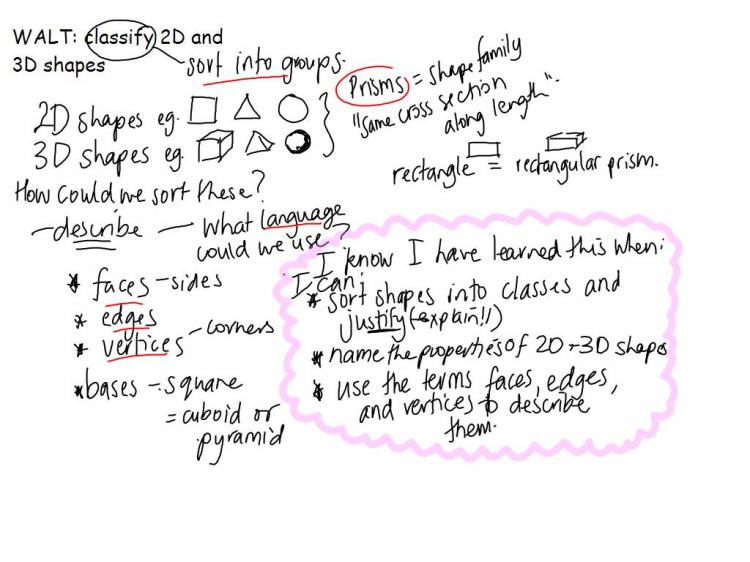Increasing opportunities for student reflection and ownership of learning with MyPortfolio
Tags: Assessment | Mathematics and statistics | e-Portfolios | Primary | Upper primary |
Student ownership of learning at Fairfield Intermediate School in Hamilton was supported through MyPortfolio.
"In our school, e-learning is part of effective cycles of reflection and assessment, involving the wider community."
eLPF 2014
Developing an ePortfolio approach
Through a cycle of teacher inquiry teachers at Fairfield Intermediate developed an ePortfolio approach focused on the use of web based tools to:
- increase opportunities for students to reflect on their learning and seek feedback
- explore the use of online spaces to support collaboration and student ownership of learning.
One teacher found that in her learning-focused classroom, implementing a successful ePortfolio approach required her students to know how their learning relates to the New Zealand Curriculum, and that they could contribute to identifying goals and next steps for learning .
Focusing Inquiry
Using ePortfolios for setting goals
Students at Fairfield developed goals for their learning in reading, writing, and mathematics twice a year as part of the school’s reporting process. This was identified as an opportunity for students to develop increased ownership of their learning, including challenging and supporting students to develop key competencies. These they uploaded to their ePortfolios using MyPortfolio , a personal learning environment that enables users to record and showcase evidence of achievement, manage development plans, set goals, and create online learning communities.
The students also used a range of assessment data to identify and develop learning goals based on their learning needs and in partnership with their teacher, including:
- e-asTTle
- Assessment Resource Banks (ARBs) and
- teacher feedback from exercise books.
They identified and recorded how they intended to achieve each goal, and how their family and teacher might support them.
Using ePortfolios to show evidence of learning
When reviewing their progress students included at least two pieces of evidence that demonstrated their learning in response to each goal.
This evidence was uploaded to their ePortfolios.
Next steps
After uploading or linking to evidence in their ePortfolio students evaluated whether their learning goals had been met, how they knew they have learnt, and what were their next steps for learning.
“Both the learning management system (LMS) and ePortfolio evidence show clear links to teaching and learning in The New Zealand Curriculum and assessment for learning.”
Erin Sawyer
Teaching and Learning
The following artefacts: “The online modelling book” and “Evidence of learning” were developed and uploaded to ePortfolios where they supported student learning.
The Online Modelling Book
Lessons, where students were learning to classify two and three-dimensional shapes, were recorded and shared in an online modelling book via the interactive whiteboard (IWB). Content included:
- the learning intention - Classify 2D and 3D shapes
- co-constructed success criteria - "I know I have learned this when I can…"
- any relevant thinking during the lesson - "How could we sort…?" "What language could we…?"
- illustrations.
The resulting image from the online modelling book was exported as an image file from the IWB software and uploaded to Ultranet, the school’s learning management system (LMS).
Here it could be revisited by students and viewed by family and whānau.
Co-constructing success criteria helped both the teacher and the student to know if and when the learning intention had been met.
Students used the success criteria:
- to show they understood what they were learning.
- when leading conversations about their learning with peers, their teacher, family, and whānau.
Evidence of Learning
Students completed a range of tasks to demonstrate their understanding of creating, describing and viewing two and three dimensional objects and shapes including:
- Study Ladder
- textbook tasks
- making three dimensional models using nets
- completing ARB portfolio samples
They were encouraged to refer to, and use, the success criteria to describe and evidence their learning in relation to the tasks.
Artefacts and anecdotal evidence of their results was uploaded to their ePortfolios.
Learning Inquiry
As a result of the teacher inquiry teachers at Fairfield gained an increased understanding of the links between teacher practice, effective pedagogy, and e-learning. The inquiry reinforced that implementing an ePortfolio approach does not happen in isolation. ePortfolios, as a place to evidence both progress and achievement for students, were an outcome of the learning and the related tasks and activities that students experienced and selected as evidence of their learning.
Students were encouraged to share evidence of their learning in relation to The New Zealand Curriculum through their ePortfolios. Evidence included:
- bookwork
- photos of models
- explanations of understanding
- screenshots of online learning activities
- video recordings.
Some of the evidence that students include is also sourced through Ministry of Education resources such as the ARBs .
The teacher reported that her students were more readily motivated, could see the purpose in their learning, and future benefits.
She also noted the importance of developing school-wide objectives and a shared understanding of the purpose - for students, teachers, and the wider community - when planning for success. As a result decisions on ePortfolio implementation were more likely to be informed by the principles of the curriculum, putting students at the centre of teaching and learning.
